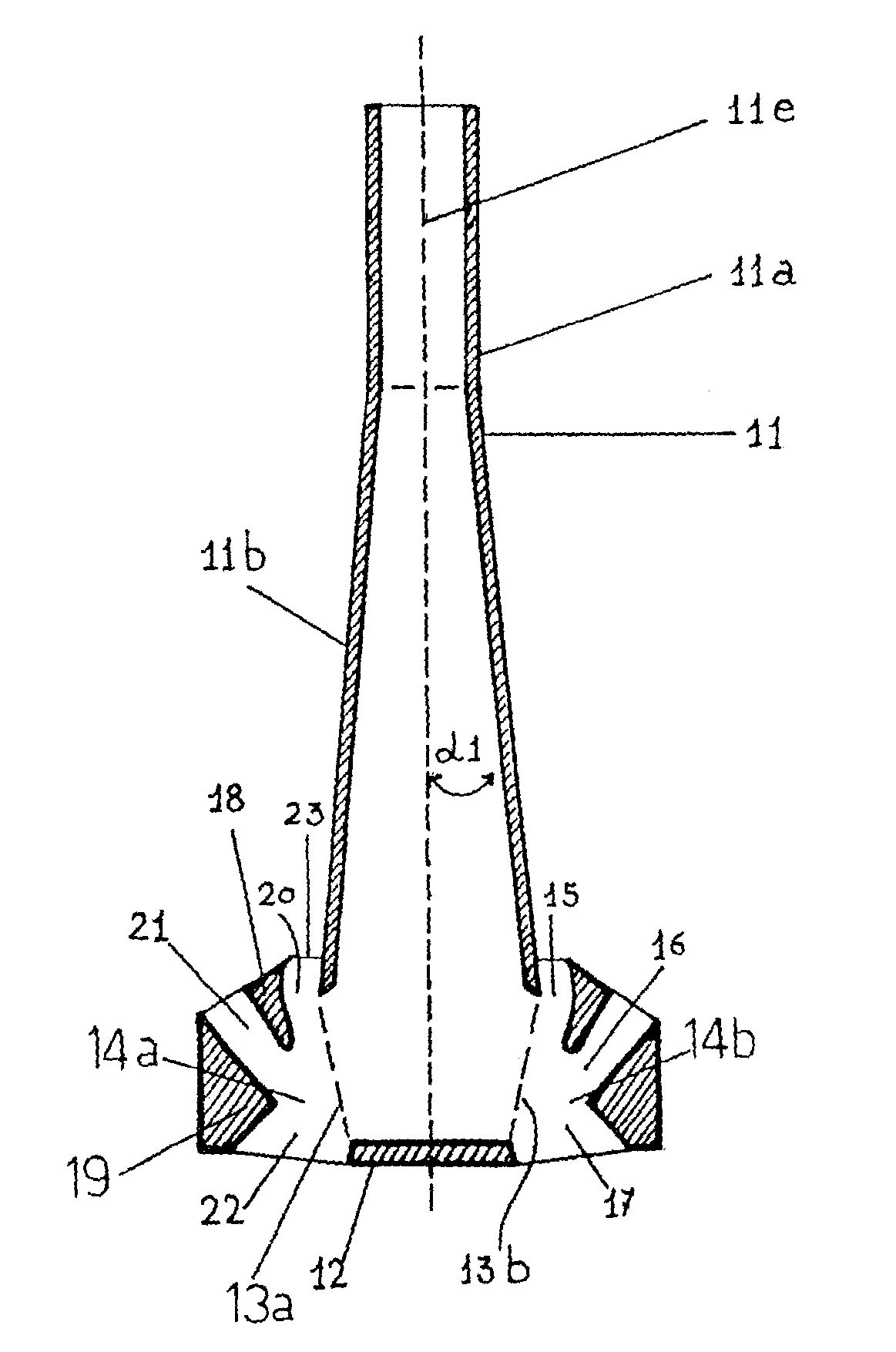Nozzle for continuous casting
a technology of continuous casting and nozzle, which is applied in the direction of furnaces, manufacturing converters, liquid transfer devices, etc., can solve the problems of reduced tensile strength and/or resilience, excessive susceptibility to work hardening, and reduced friction, etc., and achieves good uniform temperature and low speed
- Summary
- Abstract
- Description
- Claims
- Application Information
AI Technical Summary
Benefits of technology
Problems solved by technology
Method used
Image
Examples
first embodiment
[0015]FIG. 1 is a longitudinal sectional view of a nozzle according to the invention;
second embodiment
[0016]FIG. 2 is a longitudinal sectional view of a nozzle according to the invention;
[0017]FIG. 3 is a longitudinal sectional view of the nozzle of FIG. 1, according to a plane orthogonal to the plane of FIG. 1;
[0018]FIGS. 3a–3e each show a cross section of the nozzle of FIG. 3.
[0019]In the figures, similar parts are identified by the same reference numbers; in addition, for reasons of simplicity, in one and the same figure with specular parts, some reference numbers are indicated in one of the parts and other reference numbers in the other. Finally, some of the reference numbers indicated in one figure may not be indicated in another figure, in order to prevent any reading mistakes. However, it is understood that the said reference numbers and indications are valid for all the similar figures.
[0020]The nozzle according to the present invention is used for continuous feeding a liquid metal into a crystallizer for the continuous casting of slabs, preferably having a medium to small t...
PUM
| Property | Measurement | Unit |
|---|---|---|
| angle β1 | aaaaa | aaaaa |
| angle β1 | aaaaa | aaaaa |
| trailing angles β3 | aaaaa | aaaaa |
Abstract
Description
Claims
Application Information
 Login to View More
Login to View More - R&D
- Intellectual Property
- Life Sciences
- Materials
- Tech Scout
- Unparalleled Data Quality
- Higher Quality Content
- 60% Fewer Hallucinations
Browse by: Latest US Patents, China's latest patents, Technical Efficacy Thesaurus, Application Domain, Technology Topic, Popular Technical Reports.
© 2025 PatSnap. All rights reserved.Legal|Privacy policy|Modern Slavery Act Transparency Statement|Sitemap|About US| Contact US: help@patsnap.com



